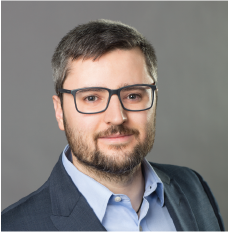email: denis.istrati@gmail.com

Dr. Denis Istrati is a visiting professor in the Laboratory of Harbour Works (LHW) of National Technical University of Athens (NTUA). He works on large-scale physical experiments and cutting-edge computational modeling of fluid-structure interaction that aims to decipher and quantify the effects of extreme water hazards (coastal storms, tsunamis, floods), cascading effects (e.g. water-borne debris) and multi-hazard scenarios on the built environment and communities.
His team has developed, calibrated and validated next-generation physics-based computational models on high performance computing, which advanced the fundamental understanding of the aforementioned hazards and quantified the associated vulnerability for different types of infrastructure, including bridges, buildings, ports, energy infrastructure etc. Such models have also enabled his team to look at mitigation strategies, such as, breakwaters and nature-based
solutions. Dr. Istrati has participated as PI, co-PI and/or researcher in several projects as faculty in the United States and in Europe. His past research projects and publications in the US focused on the (i) Tsunami performance assessment of coastal bridges”, funded by the Federal Highway Administration of the United States, (ii) Development of “Tsunami Design Guidelines for Bridges” led by a pool-fund study (https://peer.berkeley.edu/news/released-tsunami-design-
guidelines-new-bridges), (iii) Assessment of the debris transport and impact on transportation infrastructure, and (iv) Investigation of storm surge and extreme wave impact on coastal buildings and decks. Currently, Dr. Istrati is part of the NTUA coordinating team of the Horizon Europe project, TRIQUERTA (https://triquetra-project.eu/) and his team is responsible for developing
high-fidelity multi-scale computational models that will assess the impact of climate-change (e.g. sea level rise), coastal storms, tsunamis and floods on coastal, underwater and inland cultural heritage sites. These models will then be used for the development of next-generation digital twins and integrated into a digital platform that will assess the risk and identify optimal mitigation measures.
He is also currently involved in different national and international initiatives related to extreme water hazards, such as, (i) the Coastal Hazard Advisory Board Advisory of the US Structural Extreme Events Reconnaissance Network (https://www.steer.network/about), which aims to build resilience to coastal hazards through reconnaissance, (ii) the MAKEWAVES project (https://www.tseahub.net/makewaves) led by the UCL, which involves testing at HR Wallingford and investigates the runup and impact of extreme waves and tsunamis on buildings and coastal protection systems, i.e. breakwaters and nature-based solutions, and (iii) the technical committee “TG2.13 - Design and assessment for tsunami loading” of the International Federation for Structural Concrete (fib), which focuses on developing some preliminary guidance for the
tsunami design of building, bridges and ports in Europe.